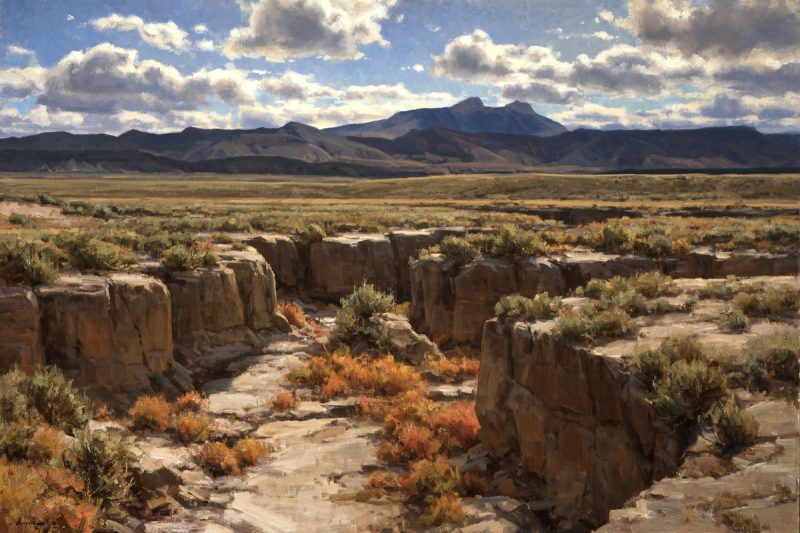
Tumbleweeds by Clyde Aspevig, whose work is on display at YAM in "Nature's Cadence."
For a lifetime, Clyde Aspevig has been listening to the cadence of nature … its crashes and whispers, its grand symphonies and its single sonorous notes. An exhibit, on display through July 8 at the Yellowstone Art Museum, celebrates his mastery and vision.

In every season, he is literally and physically “in” his subject matter. Subtle, intimate views draw him as surely as do heart-stopping, dramatic vistas.
Born and raised in Montana, Aspevig is a world traveler; however, he returns to his wellspring of inspiration – the northern Plains and northern Rockies – with the sureness of the migrating sandhill cranes. Through the filters of his intense curiosity and his wide-ranging familiarity with the history of art, Aspevig has approached the craft of painting with both intellect and emotion.
His work brings the historical past into the present while simultaneously representing his unique hand, so clearly distinguishable from the work of other contemporary landscapists.
The YAM’s exhibition includes 37 paintings on loan from the artist, museum and private collections from across the nation. The exhibition is the fifth installment in the museum’s Montana Masters series, which focuses on the work of mature artists who have not only created a profound body of work, but who have influenced artistic practice in the region.
Aspevig’s reverence for the craft of painting is evident in the influences he acknowledges, including Danish-American Emil Carlsen (1848-1932). “Nature’s Cadence” has been coordinated in tandem with an exhibition of Carlsen’s work to permit the viewer to study how the work of an artist from the past can be reshaped and made visible once again in the present. These two exhibitions inform each other, respectively offering a 21st and 19th- to 20th-century view of natural scenes that range from the sublime to the extraordinary.
“What Clyde Aspevig admires in the work of his predecessors … is the sincerity of the ‘emotional intensity’ with which they have observed and pictorially recounted the natural world around them. He has been committed, through his fresh and spontaneous field work and the individual poignancy, chromatic balance and compositional force of his studio paintings, to resolving those components into his own expressions of emotional intensity,” writes Peter H. Hassrick, director of the Petrie Institute of Western American Art at the Denver Art Museum.
“And it is this wedding of the spirit of place with aesthetic harmonies and personal temperament that has allowed Aspevig to command the top ranks of today’s American figurative landscape tradition.”